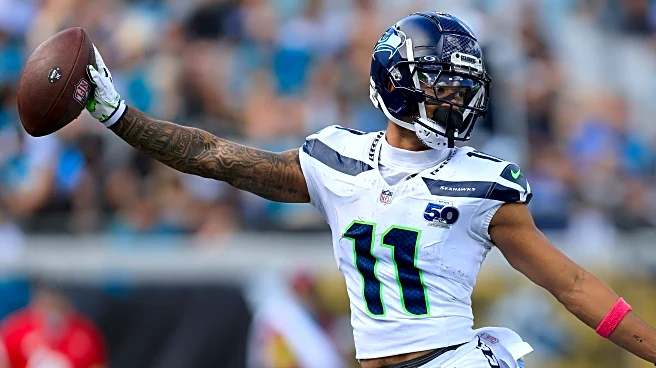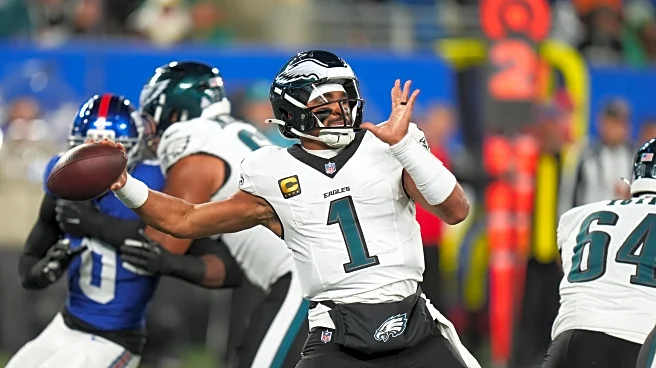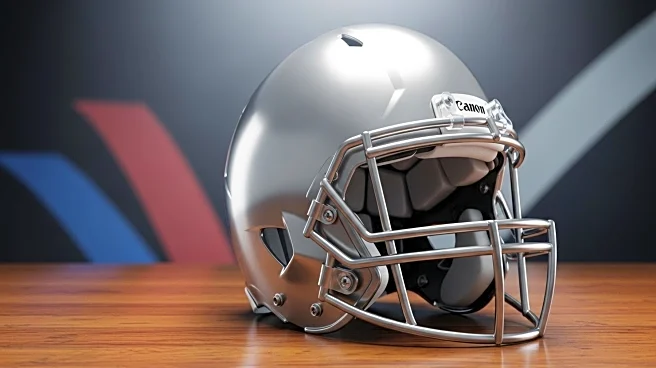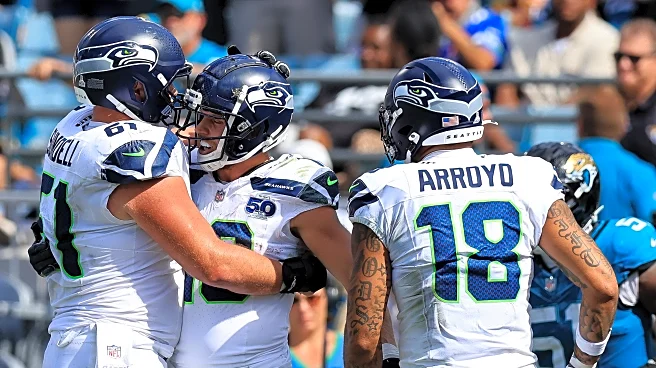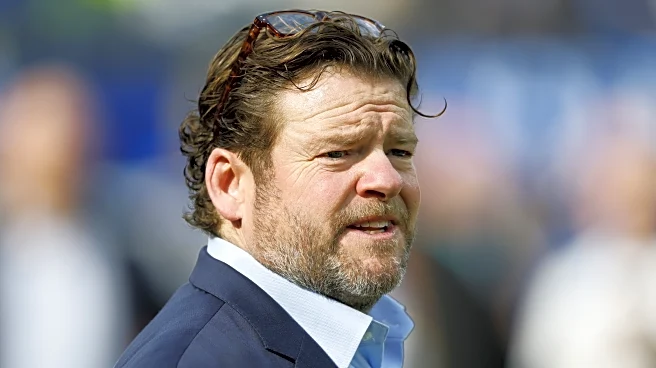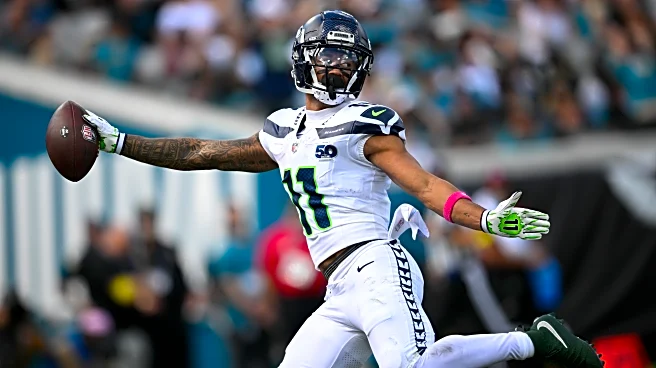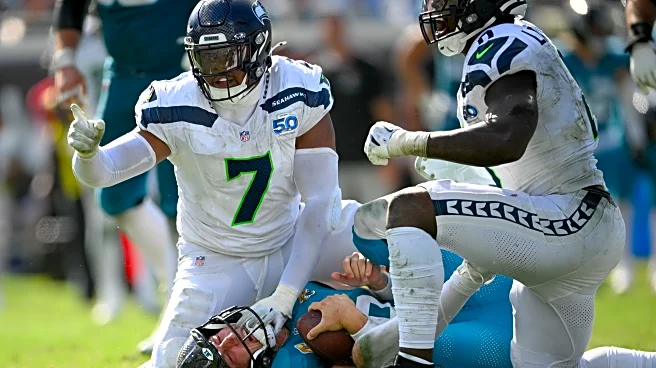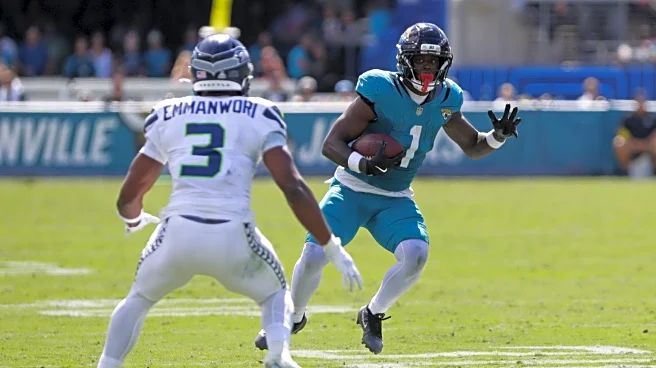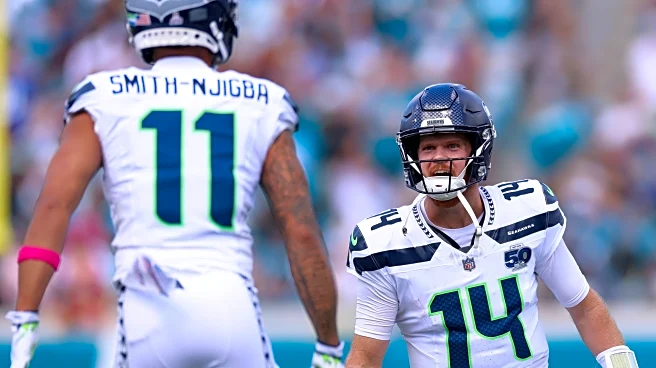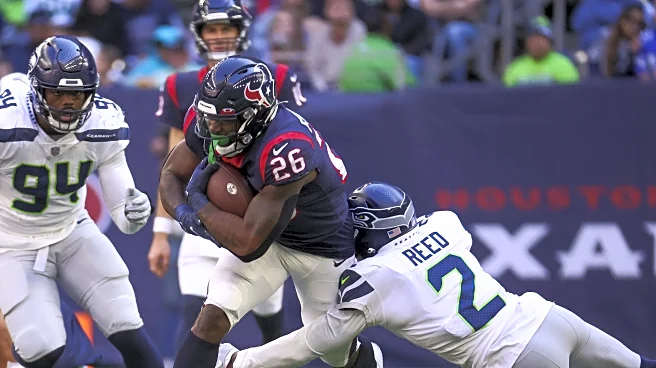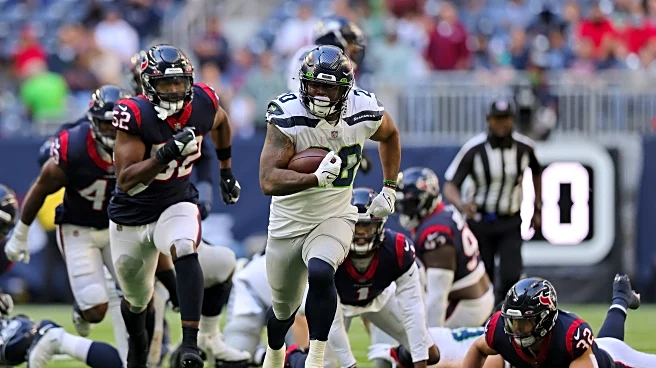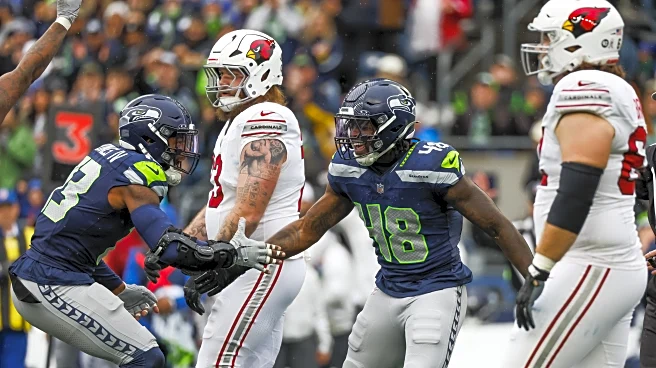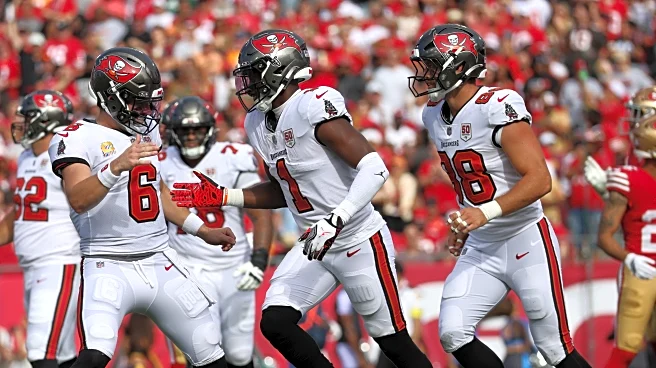The Seattle Seahawks bounced back from their home loss to the Tampa Bay Buccaneers, beating the Jacksonville Jaguars in Florida. The Jacksonville team was 4-1 with two close wins against the Kansas City Chiefs (on the final drive) and the San Francisco 49ers (riddled with injuries), a loss to the Cincinnati Bengals with Jake Browning, and a win over the Houston Texans, our next opponent.
The defense put on a strong pass-rush performance, recording seven sacks on Trevor Lawrence, a number that could
have reached double digits given the missed opportunities. However, the secondary made serious mistakes that left the game open until the final drive.
Speaking of keeping the game open, the Seahawks offense did the same. After the first drive of the second half, the team did nothing and only converted one third down on twelve attempts.
So, despite the positives, there are lessons to be learned for the upcoming games.
All data used in this article was taken from PFF.
The Bad
A bad day for the running game
The Seahawks had 26 carries for 60 yards, an average of 2.3 yards per carry. Especially in the second half, the Seahawks were conservative at times and decided to run the ball, which resulted in losses.
There were execution errors and planning errors. The Seahawks insisted on running outside zones (a run the Jaguars had previously struggled to defend) and didn’t make the best use of their running backs, primarily putting Zach Charbonnet on runs in space, rather than using him on more inside runs.
Against the Bucs, Ken Walker had no runs for negative yards and only one run for zero yards. Against the Jags, four runs resulted in zero or fewer yards, and Charbonnet had five more attempts for the same result.
In the play above, there’s no planning, no running back who can achieve success. Abe Lucas clearly misunderstood the play and blocked on the opposite side of the play, leaving the RB with no options of what to do and resulting in a loss of yards.
I’ll take a break from the running game to talk about Abe Lucas. The re-signing was a great move, a low-value move compared to other RT deals. However, he hasn’t performed well this year. The game against the Cardinals was perhaps his worst, but he rebounded against the Bucs and had another step back in performance against the Jaguars.
On this play, he uses his standard pass set and patient mindset to wait for Trevon Walker, but the edge manages to change the timing and prevent the RT from positioning his hands. The result is that Lucas is thrown into the quarterback and ends the snap on the ground. The Seahawks desperately need him to return to the level we know he’s capable of playing.
Jalen Sundell should be moving upfield to block LB No. 23, but he can’t. Anthony Bradford takes a step to the wrong side, delaying his arrival at the second level to block LB No. 0. The Seahawks called an outside zone, a reach block is needed, that is a block that requires a lot of explosion to reach the DL who is in an unfavorable alignment, any error in execution is fatal, as it was on this play.
Opportunities for improvement for Sam Darnold
Darnold finished the game 16-of-27 for 295 yards and 2 TDs. Most importantly, he didn’t commit a turnover against the Jaguars’ league-leading defense in this criteria.
The QB has been playing at a higher level than most expected when his name was announced. This pass is a prime example of this. Klint Kubiak’s play-calling allows Darnold to read only one side of the field, essentially a high-low read or Smash. He reads the receiver on the deep route; if he’s open, the pass will go to him; otherwise, he’ll take the shorter route.
Cooper Kupp runs an excellent route, exploiting the space left behind the cornerback who is covering Tory Horton. Two details are crucial to his success. The first is that as Kupp passes the cornerback, he takes a step toward the middle of the field, intending to keep him away from the sideline. The second is that the ball leaves Darnold’s hands before Kupp makes the cut. This is crucial in the NFL. Good QBs don’t pass to open players; good QBs pass to players who WILL BE open.
That said, there are areas for improvement in his game. He had two or three passes in the middle of the field that could have resulted in an interception, so he needs to improve his accuracy. In the play above, the read is good, but the pass is slightly behind the receiver. Note that JSN needs to slow down to adjust to the ball, giving the cornerback time to fight for the ball and prevent the catch.
Sam Darnold is one of the players responsible for the Seahawks’ low number of sacks allowed. On this play, he hesitates, resulting in the only sack of the game. Note that the blitz comes from the right side, and the Seahawks have three receivers in that area against essentially one Jags defender. Kupp and Horton would have converted the first down here. A missed opportunity that needs improvement.
Klint Kubiak ups and downs
Kubiak has proven to be a much better option than Ryan Grubb, but that doesn’t mean he doesn’t have room for improvement. The team needs to maintain consistency throughout the game. The opening drive of the second half was very well planned and executed, but after that, the Seahawks didn’t get anything going until the final drive.
During the second half, he often chose to run the ball instead of pass, showing an exaggerated conservativeness (like against the Cardinals). Yes, running is essential for the play-action work, but he took the ball out of Darnold’s hands when the QB was “hot.” The Seahawks reached the red zone for the first time on their third drive, and Kubiak simply took away the ball from Sam and called three runs up the middle for Zach Charbonnet, and the team had to kick a field goal from the 6-yard line.
Speaking of Zach Charbonnet, he wasn’t put in the best situation. I think the Seahawks have a good RB duo and they complement each other very well. Charb lacks the explosiveness needed for these extreme lateral runs, especially on a day when the OL was struggling with this play.
On the positive side, he’s been successful in play-action, even though the running game isn’t a real threat currently (I believe this will become a major problem for our opponents at some point). But beyond play-action, he’s been utilizing his tight ends very effectively in these plays, whether to manipulate the linebackers with blocking threats or to create a more protected pocket, as is the case in this play.
Kubiak calls his preferred concept the Yankee with some little variations. The Yankee concept consists of two main routes. Sometimes, there are checkdown routes with running backs or tight ends escaping into the flats. These main routes are: a 16-18 yard dig route and a post route on the opposite side. Horton here changes the route at the end, but the highlight is how JSN can see the field and the defenders’ movements to adjust his route and facilitate the pass.
The Good
Mike Macdonald pass rush bounceback game
The Seahawks’ pass rush didn’t work against the Bucs, further exposing their missing secondary. Against the Jaguars, who had only allowed 6 sacks this season, the Seahawks managed 7. It’s worth noting that the team also missed some opportunities to finish plays and improve that number. In addition to seven sacks, the Seahawks recorded 17 quarterback hits yesterday. According to ESPN Research, that was the most in at least 25 years.
This type of play allows them to create pressure with just four men. An unusual lineup features Leo Williams as the edge, essentially a wide-9, Demarcus Lawrence as the 5-tech, Boye Mafe in the A-Gap, and Uchenna Nwosu as the wide-9 on the opposite side. Ernest Jones is in a green dog role, meaning he’s initially assigned to man-to-man coverage at the running back, but would be sent on the blitz if the running back remained to block.
Furthermore, he uses Mafe and Lawrence in a stunt to draw the attention of the guards and center and create a one-on-one situation for his edges. Nwosu uses a long arm to get to the QB, while Leo Williams easily passes the TE and uses a club move/fork tech + swim move to win the OT and share the sack. Teamwork.
Another good design by Macdonald. Seven men on the line and once again a formation with three edges and one DT. The snap happens, and Mafe and Nwosu, who are on the right side of the defensive line, drop into coverage. However, their presence forces the RB to check that side of the protection. Seahawks have five pass rushers: Byron Murphy, LBs Drake Thomas and Ernest Jones, Demarcus Lawrence, and Nick Emmanwori. The DB has an open path to the QB because the initial play design caused the RB to be out of position. It’s worth highlighting Mafe’s excellent drop play, forcing a more difficult pass.
Much of Macdonald’s defensive line scheme requires executing stunts. Mafe and Jarran Reed on the left side occupy the center, left guard, and left tackle positions. Lawrence’s alignment is too wide, which causes the center to “dismiss” his threat (notice he looks to the right, but quickly returns his attention to the stunt).
The play features a stunning execution by Leonard Williams, attacking the gap between the RG and RT with a crazy rip move. This occupies both players and leaves Lawrence free. He uses his experience to find the best path to the QB and get the sack.
I’m not particularly in favor of Drake Thomas replacing Tyrice Knight. Even though the sophomore isn’t at his best, I think he has much more potential than Thomas. However, Thomas had his best game against the Jags. In this play, MM uses him as a blitzer, one of his best assets. He’s 228 lbs and the LT is 325, but Thomas doesn’t seem to care and easily dismisses the OL, giving him a clear path to the QB and getting the sack.
Another important factor for the play to work. Notice Uchenna Nwosu’s shift when he identifies the play-action with the guard pulling on the other side. He forces the QB into the pocket, even if it means he won’t get the sack. With no alternatives, Trevor Lawrence is sacked. How many times this season has this EDGE not allowed the QB to escape? Another good team effort.
A big game for previous Seahawks first-round picks
JSN and Byron Murphy had fantastic games. JSN leads the league in receiving yards with 696 and also ranks first in receiving yards per game (116.0), third in 20-yard receptions (13), fifth in receptions (42), and sixth in reception average (16.6). He also became the Seahawk with the most receiving yards through the first six games, passing Tyler Lockett (542 in 2020) and Steve Largent (532 in 1985).
Byron Murphy had two sacks in the game, bringing his total to 4.5 so far this year. Furthermore, according to ESPN Research, his seven pressures against the Jaguars are the most by a Seahawks player in a game since Carlos Dunlap also had seven against the Bears in Week 16 of 2021 (when we lost to Nick Foles on a Jimmy Graham two-point conversion).
The Seahawks called the same play from the same formation. The result? The same. On both plays, JSN manipulates the cornerback with incredible routes and creates space for himself on the sideline. Simply amazing.
Klint Kubiak makes an excellent call against the Jaguars’ Quarterback coverage. Explaining Quarterback in detail would probably require a whole article, but here’s a brief summary. First, it’s important to understand the concept of zone/man match. Man match and zone match are hybrid defensive coverages where defenders initially play zone, but then switch to man-to-man coverage based on the offensive players’ routes.
In this play, let’s stick to the top of the video. The cornerback will cover the bottom quarter of the field. The safety needs to read #2, which in this case is Elijah Arroyo (No. 18). If Arroyo runs a vertical route, that is, a route for more than five yards, he becomes the safety’s responsibility. Otherwise, he becomes the cornerback’s responsibility, and the safety will drop to his zone. That’s what happens: Arroyo’s route traps the safety until he can no longer help double JSN. For those who think the WR is slow or can’t play outside, this TD proves otherwise. The 61-yard reception was the longest of his career.
There are many snaps I could highlight about Murphy, but I decided to showcase his work as a nose tackle (0 and 1-tech). The Seahawks need him to help in the running game, and he’s been finding ways to get pressure from this alignment as well. In the play above, he’s quick, moving from one A-gap to another very quickly. Then, he shows good handwork with a club move to generate pressure on the QB.
He uses the bull rush, the most frequently used move from this alignment. Given his natural leverage, he can push the center back several yards. He needs a counter move as an area of improvement, but he keeps his eyes on the QB and, as he leaves the pocket, is sacked by Murphy.
Final Thoughts
It’s great that the pass rush was able to turn things around after a game that fell far short of expectations. This kept us in the game on a day when we had several absences in the secondary. This is crucial for the next game, where we’ll face, theoretically, a OL with more passing problems but better offensive weapons.
On the other hand, the offense showed some promising plays, but the lack of points after the opening drive of the second half is very worrying. The Texans will have the best pass rush the team has faced since Week 1 and perhaps the best defense of the year with Derek Stingley, Jalen Pitre, and company. But that’s something we’ll cover in the preview; until then!
Go Hawks!
